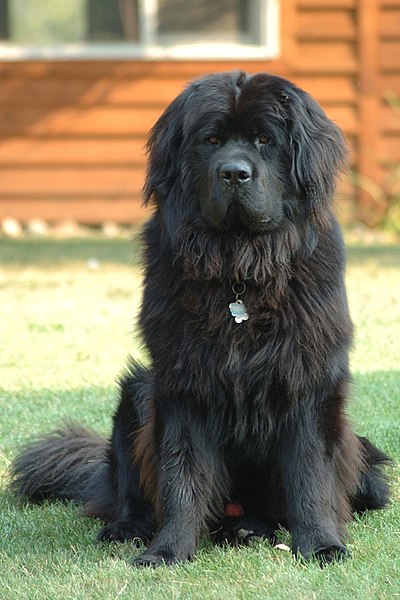Dog Day Saturday 2022-08-13
Owning and interacting with pets, according to studies, can be a form of therapy for many. We have dedicated Saturday to dogs and Wednesday to cats, when we will post an article on each of those days. We will also post articles on occasion about other animals people may have as pets. – Editorial Team
NEWFOUNDLAND – THE ARISTOCRAT AMONG DOGS.

Source Wikimedia Commons. Photo by DanDee Shots from Flickr. This photo is licensed under the Creative Commons Attribution 2.0 Generic license.
The dogs which take their name from the island of Newfoundland appeal to all lovers of animals.There are now two established varieties, the black and the white and black. There are also bronze-coloured dogs, but they are rare. The black variety of the Newfoundland is essentially black in colour; but this does not mean that there may be no other colour, for most black Newfoundlands have some white marks. In fact, a white marking on the chest is said to be typical of the true breed. Any white on the head or body would place the dog in the other than black variety. The black colour should preferably be of a dull jet appearance which approximates to brown. In the other than black class, there may be black and tan, bronze, and white and black. The latter predominates, and in this colour, beauty of marking is very important. The head should be black with a white muzzle and blaze, and the body and legs should be white with large patches of black on the saddle and quarters, with possibly other small black spots on the body and legs.
Apart from colour, the varieties should conform to the same standard. The head should be broad and massive, but in no sense heavy in appearance. The muzzle should be short, square, and clean cut, eyes rather wide apart, deep set, dark and small, not showing any haw; ears small, with close side carriage, covered with fine short hair (there should be no fringe to the ears), expression full of intelligence, dignity, and kindness.
The body should be long, square, and massive, loins strong and well filled; chest deep and broad; legs quite straight, somewhat short in proportion to the length of the body, and powerful, with round bone well covered with muscle; feet large, round, and close. The tail should be only long enough to reach just below the hocks, free from kink, and never curled over the back. The quality of the coat is very important; the coat should be very dense, with plenty of undercoat; the outer coat somewhat harsh and quite straight.
The appearance generally should indicate a dog of great strength, and very active for his build and size, moving freely with the body swung loosely between the legs, which gives a slight roll in gait. As regards size, the Newfoundland Club standard gives 140 lbs. to 120 lbs. weight for a dog, and 110 lbs. to 120 lbs. for a bitch, with an average height at the shoulder of 27 inches and 25 inches respectively; but it is doubtful whether dogs in proper condition do conform to both requirements.
When rearing puppies give them soft food, such as well-boiled rice and milk, as soon as they will lap, and, shortly afterwards, scraped lean meat. Newfoundland puppies require plenty of meat to induce proper growth. The puppies should increase in weight at the rate of 3 lbs. a week, and this necessitates plenty of flesh, bone and muscle-forming food, plenty of meat, both raw and cooked. Milk is also good, but it requires to be strengthened with casein. The secret of growing full-sized dogs with plenty of bone and substance is to get a good start from birth, good feeding, warm, dry quarters, and freedom for the puppies to move about and exercise themselves as they wish. Forced exercise may make them go wrong on their legs. Medicine should not be required except for worms, and the puppies should be physicked for these soon after they are weaned, and again when three or four months old, or before that if they are not thriving. If free from worms, Newfoundland puppies will be found quite hardy, and, under proper conditions of food and quarters, they are easy to rear.

